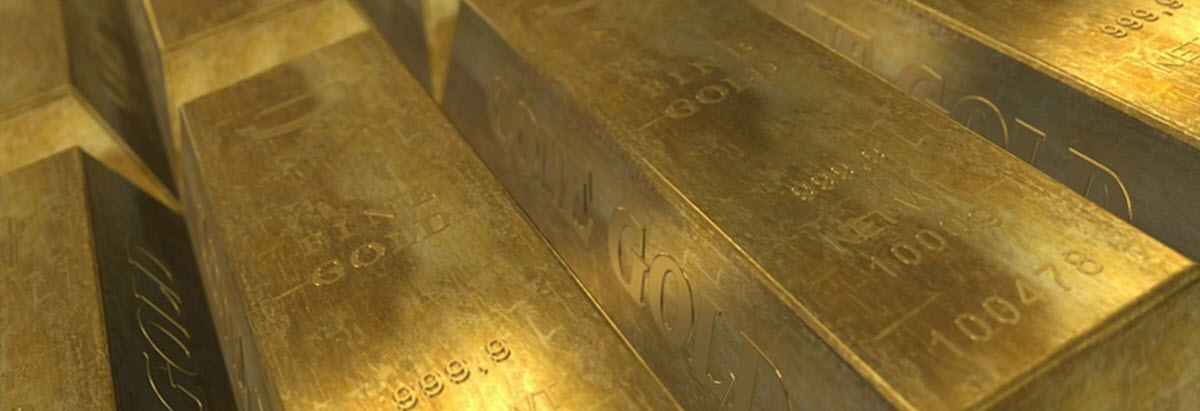Contents
Gold often occurs in its free elemental form in nature, where humans can find it in the form of gold nuggets and grains, gold in rocks, gold in alluvial deposits, and similar. Gold is believed to be one of the first metals collected and kept by humans. Collecting free elemental gold and actually using gold to create objects are of course two very different things. The earliest gold artefacts that we know of are from the end of the 5th millennium BC.

The oldest gold artefacts
- The oldest gold artefacts that we know of are from Egypt and were created during Egypt´s pre-dynastic period, at the end of the 5th millennium BC and the start of the 4th millennium BC. We have no evidence of smelting being practised until the 4th millennium BC.
- The oldest known gold artefacts from Mesopotamia is from Lower Mesopotamia and has been dated to the early 4th millennium BC.
- The oldest known gold artefacts of the Levant are from the 4th millennium BC. They were found at the Nahal Qana cave cemetery in the West Bank.
- Gold artefacts found in the Varna Necropolis in Bulgaria have been dated to the 4th millennium BC.
Old mentionings of gold
- The earliest known Egyptian hieroglyphs that mention gold are from circa 2600 BC.
- The oldest known written reference to gold is from the 12th Dynasty of Ancient Egypt (around 1900 BC).
- The oldest known map of a gold mine is from the 19th Dynasty of Ancient Egypt (1320-1200 BC).
- Gold is mentioned frequently in the Bible, including the Old Testament. We can, for instance, read about it in Genesis: “A river watering the garden flowed from Eden; from there it was separated into four headwaters. The name of the first is the Pishon; it winds through the entire land of Havilah, where there is gold. The gold of that land is good; aromatic resin and onyx are also there.”
The gold coin
- The earliest known gold coins were produced in Lydia around 610 B.C. Lydia was an Iron Age kingdom of western Asia Minor, located in what we today know as western Turkey. Gold extracted in the south-east corner of the Black Sea was important in the establishment of this coinage.
- From the 6th or 5th century B.C., a square gold coin known as the Ying Yuan was used in the Chu state. Chu was one of the largest of the ancient Chinese states.
- The largest known gold coin minted in antiquity is the gold coin of Eucratides I (171-145 BC), which measures 58 mm and weighs almost 170 grams. Eucratides I was a Hellenistic ruler of ancient Ai-Khanoum.
Gold in the Roman Empire
The Romans developed new methods for large-scale gold extraction. One notable improvement was the use of hydraulic mining, which became particularly important in Hispania from 25 BC and in Dacia from 106 AD.
Pliny the Elder described the various methods utilized for gold extraction in his encyclopedia Naturalis Historia in the late first century AD.
One of the main extraction spots for gold in the Roman Empire was at Las Medulas in León, where seven long aqueducts was constructed to extract gold from an alluvial deposit.

Mansa Musa´s hajj to Mecca
In 1324 AD, the ruler of the Mali Empire dispersed so much gold that it depressed the gold price in Egypt for over a decade and brought on inflation. Mansa Musa ruled Mali in 1312-1337 and when he went on a religious journey (hajj) to Mecca in 1324 he passed through Egypt, including Cairo, and spent a lot of gold there.
The contemporary Arab historian Chihab Al-Umari wrote:
Gold was at a high price in Egypt until they came in that year. The mithqal did not go below 25 dirhams and was generally above, but from that time its value fell and it cheapened in price and has remained cheap till now. The mithqal does not exceed 22 dirhams or less. This has been the state of affairs for about twelve years until this day by reason of the large amount of gold which they brought into Egypt and spent there […].
The Aztecs
The Aztec name for gold, in the language Nahuatl, is teocuital which means ”god excrement”. They saw gold as something excreted by the gods.
When the first European arrived to the region and saw the many gold ornaments, it fueled their keenness to explore and exploit these territories. They eventually killed the Aztec leader Moctezuma II and shipped most of his gold to Spain.
